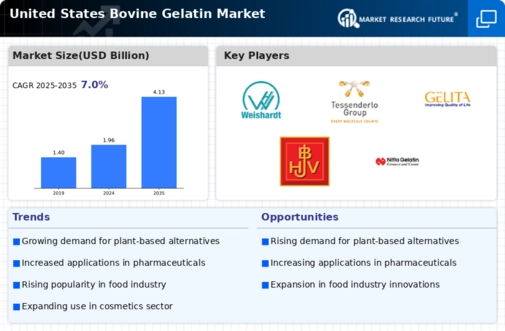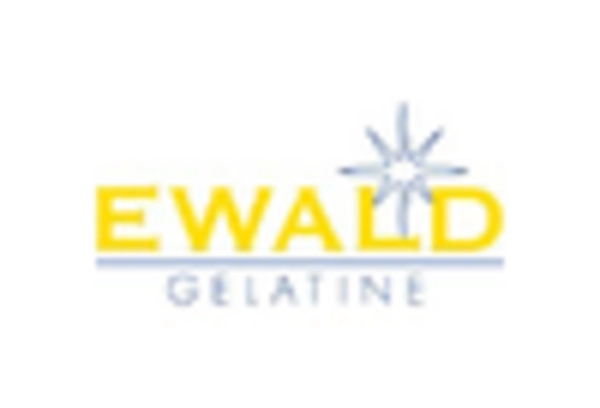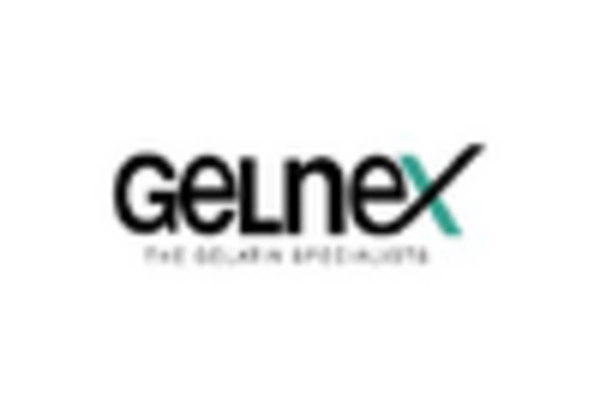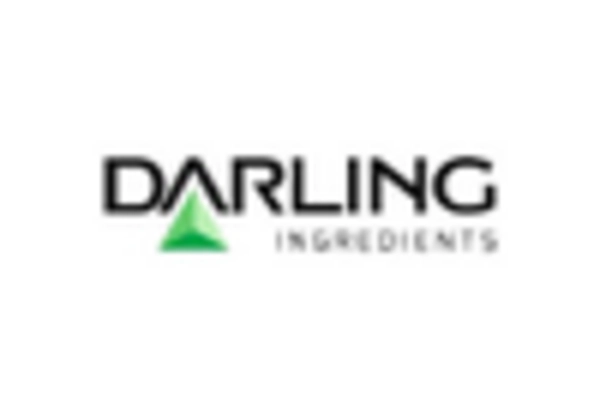Expansion in the Cosmetics Sector
The bovine gelatin market is also benefiting from its expanding applications in the cosmetics sector. Gelatin is increasingly utilized in the formulation of skincare and beauty products due to its film-forming and emulsifying properties. The US cosmetics market is projected to grow at a CAGR of around 5% in the coming years, which may lead to heightened demand for bovine gelatin as a natural ingredient. As consumers become more aware of the benefits of using natural and sustainable ingredients in their beauty routines, the appeal of bovine gelatin is likely to increase. This trend indicates a promising future for the bovine gelatin market, as cosmetic manufacturers seek to incorporate gelatin into their formulations to meet consumer demands for efficacy and safety.
Rising Popularity of Nutraceuticals
The bovine gelatin market is witnessing a significant uptick in demand driven by the rising popularity of nutraceuticals. As health-conscious consumers increasingly seek dietary supplements that promote wellness, gelatin's role as a source of protein and its potential health benefits are becoming more recognized. The US nutraceutical market is expected to reach approximately $300 billion by 2025, with gelatin-based products playing a pivotal role in this growth. This trend suggests that the bovine gelatin market could see a substantial increase in demand as manufacturers develop innovative formulations that cater to the health and wellness sector. The integration of bovine gelatin into various nutraceutical products may enhance their marketability and appeal to a broader audience.
Growing Interest in Clean Label Products
The bovine gelatin market is experiencing a shift towards clean label products, driven by consumer demand for transparency and natural ingredients. As consumers become more discerning about the products they purchase, the preference for clean label options is likely to influence the formulation of food and beverage items. The US clean label market is projected to grow significantly, with a substantial portion of this growth attributed to the incorporation of bovine gelatin in various applications. This trend indicates that manufacturers may increasingly turn to gelatin as a natural alternative to synthetic additives, thereby enhancing the appeal of their products. The bovine gelatin market stands to benefit from this growing interest, as companies strive to align their offerings with consumer expectations for quality and integrity.
Increasing Use in Confectionery Products
The bovine gelatin market is experiencing a notable surge in demand due to its increasing application in confectionery products. Gelatin serves as a crucial ingredient in gummy candies, marshmallows, and jellies, providing texture and stability. In the US, the confectionery sector is projected to grow at a CAGR of approximately 4.5% over the next few years, which is likely to bolster the demand for bovine gelatin. As consumer preferences shift towards innovative and diverse confectionery options, manufacturers are increasingly incorporating gelatin to enhance product appeal. This trend indicates a robust growth trajectory for the bovine gelatin market, as companies strive to meet the evolving tastes of consumers while maintaining product quality and safety.
Technological Advancements in Production
The bovine gelatin market is poised for growth due to technological advancements in production processes. Innovations in extraction and processing techniques are enhancing the efficiency and quality of gelatin production. These advancements not only improve yield but also reduce production costs, making bovine gelatin more accessible to manufacturers across various sectors. As the US market continues to evolve, the adoption of these technologies may lead to increased competition and a broader range of applications for bovine gelatin. This trend suggests that the bovine gelatin market could experience a significant boost as companies leverage new technologies to enhance product offerings and meet the diverse needs of consumers.

















Leave a Comment